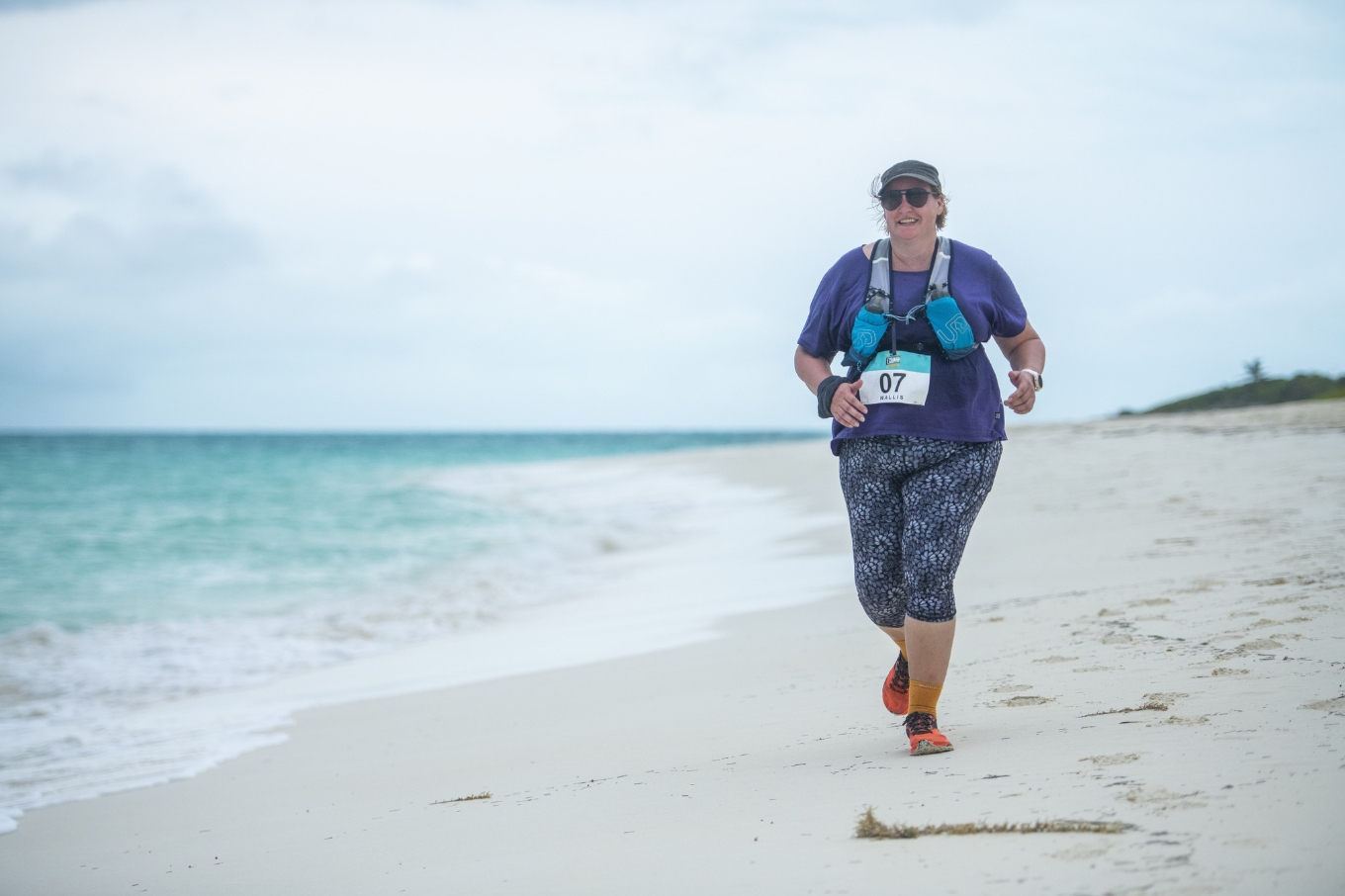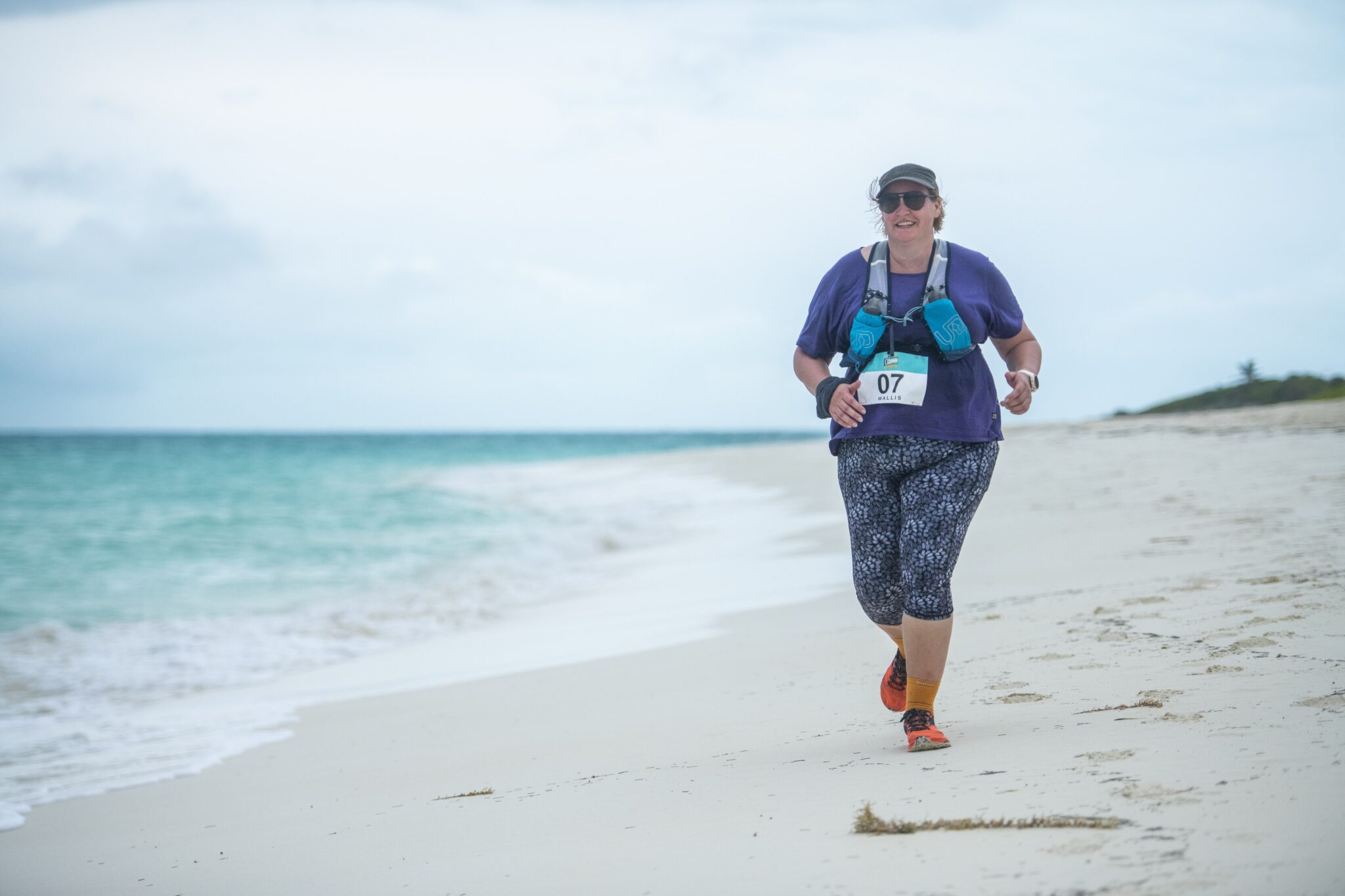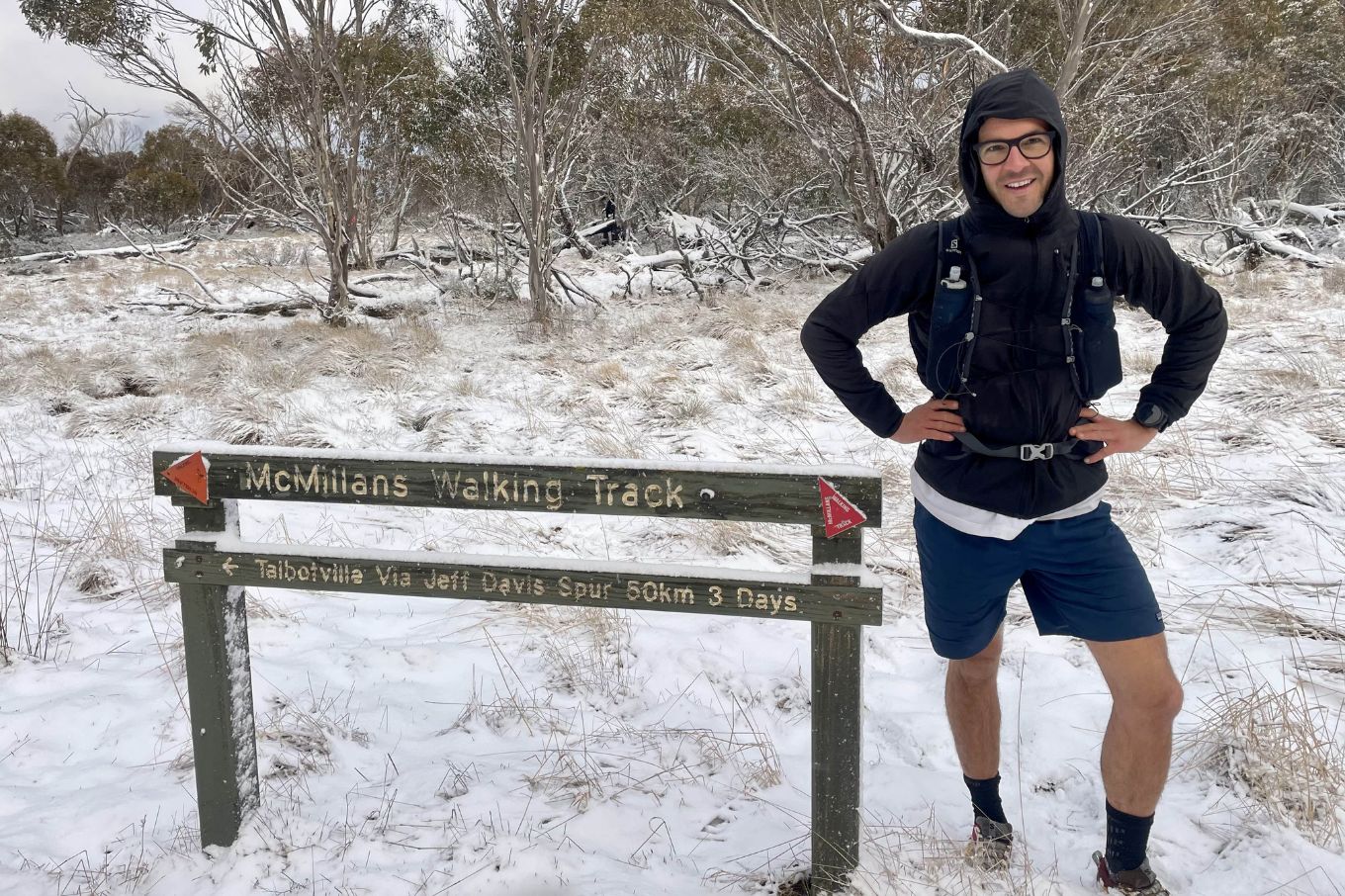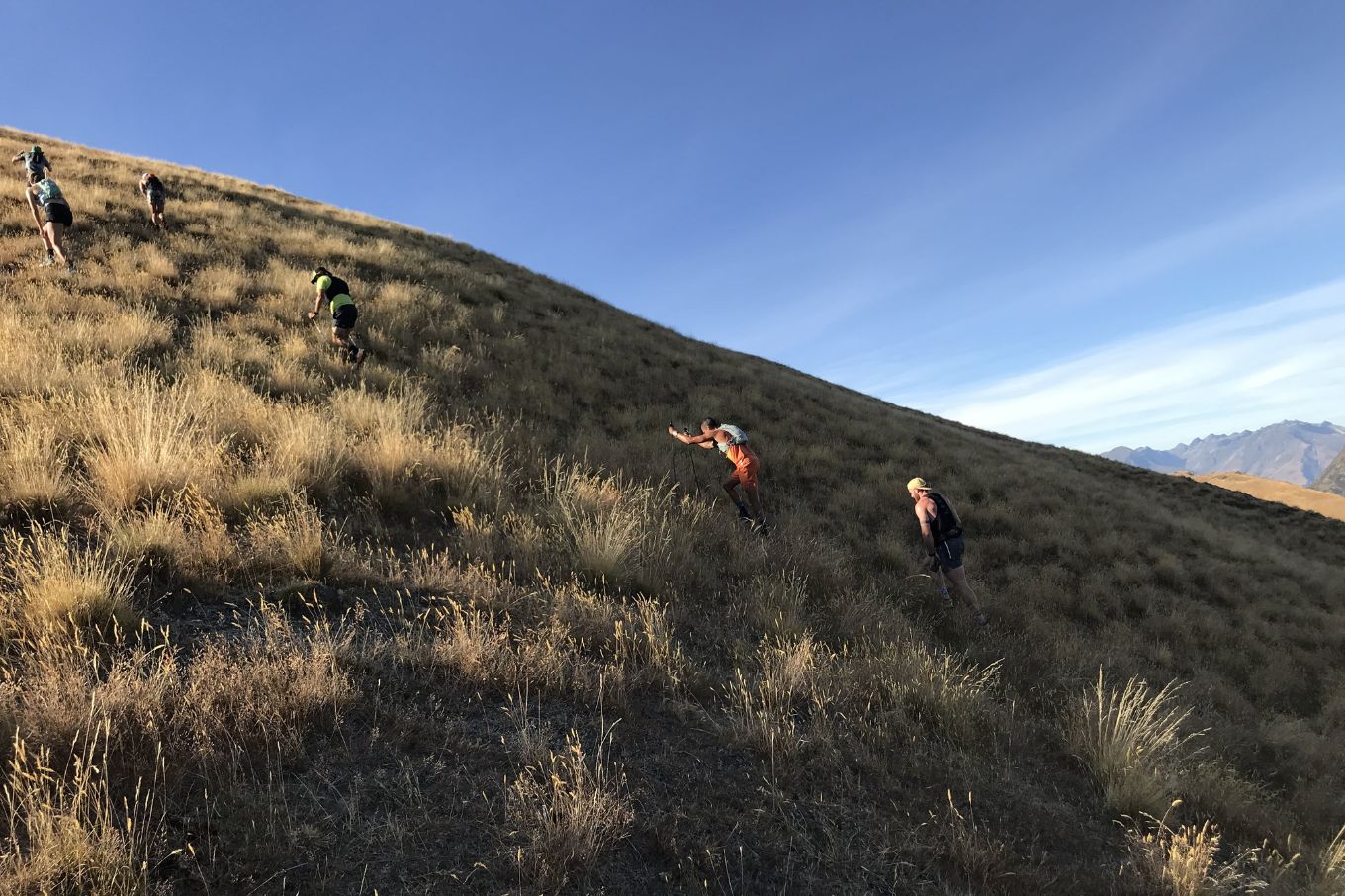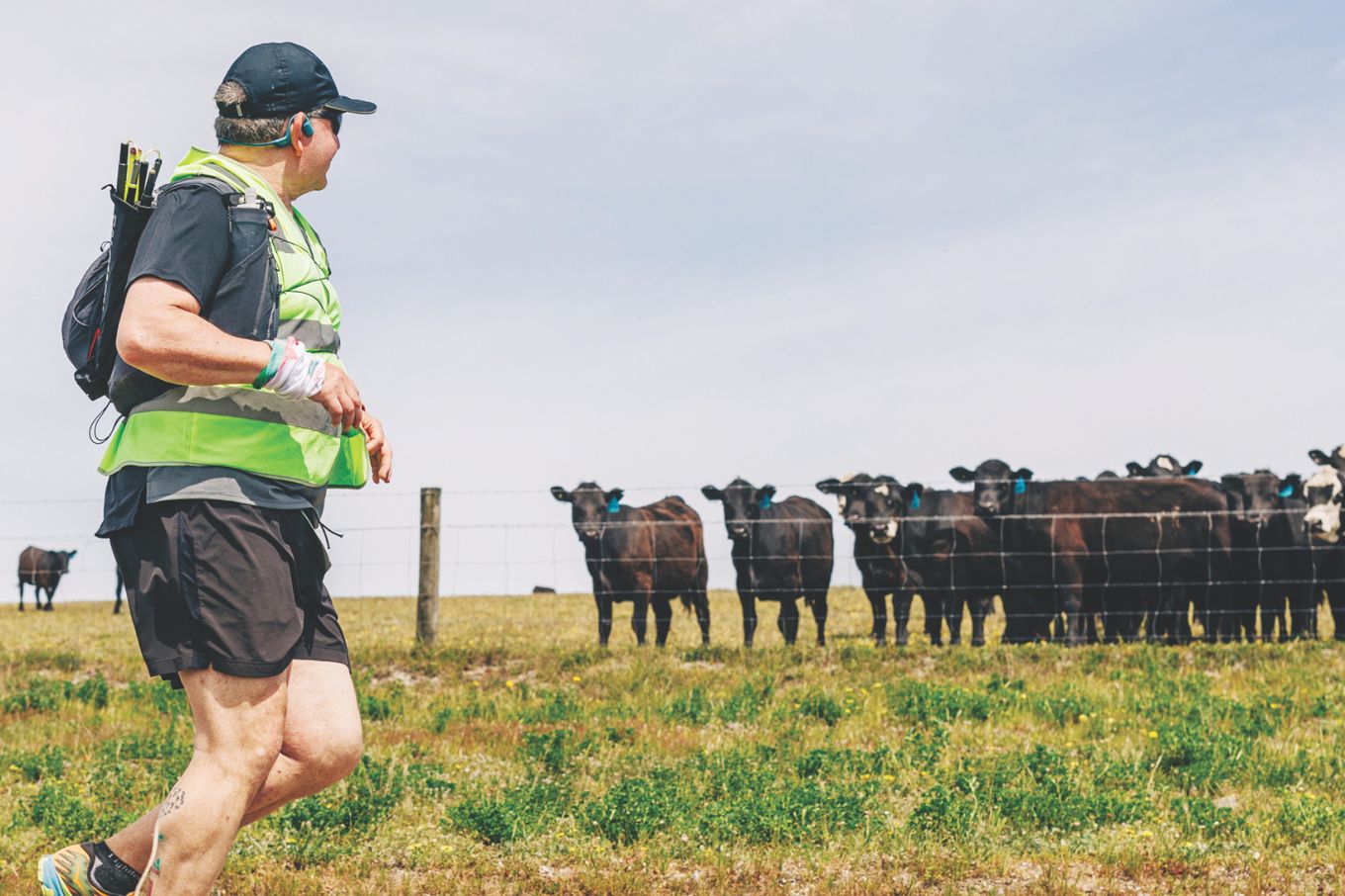'Living Life Big In The Body I Have'
Written by Samantha Turnbull
Photography by Rhys Newsome
High level endurance athletes, aka ultra and trail runners, come in all shapes and sizes, and what’s even better is that no matter your background, our community welcomes everyone with open arms to help guide them into a love of the sport. Samantha Turnbull talks to ultra runner Cath Wallis who is breaking the stereotype of what a runner looks like, and who says she hopes to inspire others who may not feel like they have a place in on the trails.
Cath Wallis looked at the form blankly. It was one of those ‘get-to-know-your-colleagues’ questionnaires. The ‘hobbies’ section had her stumped.
“I realised I had none,” she says.
“In the 20-plus years since I had finished school I had really focused on advancing in my career, and on my kids and all their activities. Beyond that I really had no idea who I was. I couldn’t even tell you what I liked to do anymore. It was like I was so busy, that I had lost myself.”
The then 40-year-old Canberran mum-of-three set out to fill the blank space on the form by finding a hobby and, in turn, herself.
She saw an advertisement for the Canberra 100 – a trail run through the hills, parks and bush of Australia’s capital city. ‘
That’s it, Cath thought.
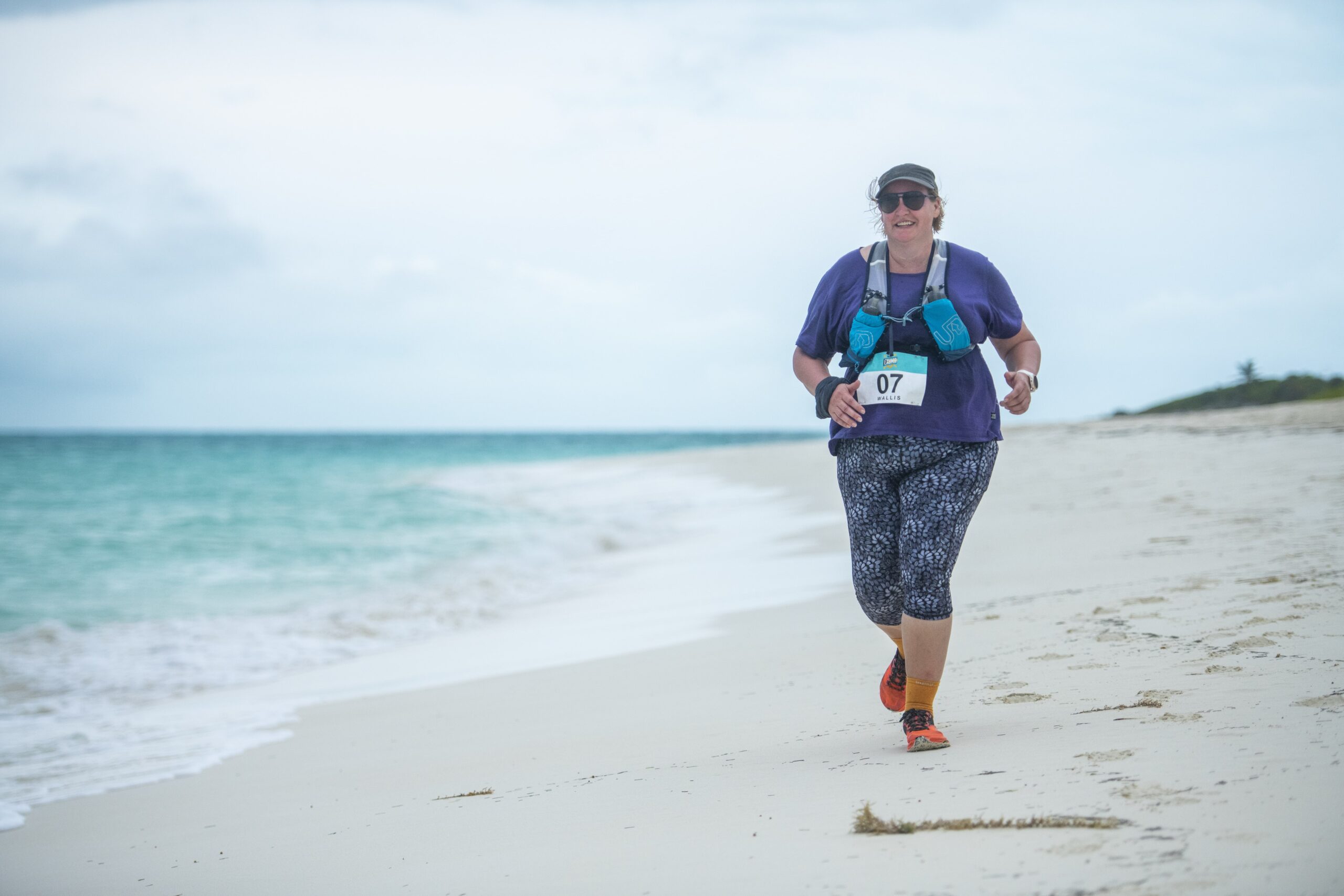
There was just one catch…the race was three months away and the longest distance Cath had run-walked previously was 5km.
“Yes, I went from nothing to 100km,” Cath laughs.
“I was clueless! I remember about three weeks out, someone asked me who was crewing me and I didn’t even know what that was.”
But when Cath checked the event cut-off times and compared them to her walking pace, she figured she could do it.
“The appeal was that it was non-technical – that if you could put one foot in front of the other, then you were doing it,” she says.
“And I was attracted by generous cut-offs that seemed to suggest slow people like me were welcome to be there.”
The temperature soared to 36 degrees the day of the event and, at one point, Cath found herself lying on the ground in the shade on the side of the trail thinking she couldn’t possibly continue.
“When it gets really hard that little voice starts saying, You’re not good enough…why did you think you could do this?” she says.
“You just have to find a way to make that voice stop and I’m pretty damn stubborn.”
Cath picked herself up and made it across the finish line, eight minutes before the cut-off and with a new hobby well and truly ticked off.
Seven years later, Cath has travelled all over the world competing in ultra marathons and smashing stereotypes about what an ultra runner ‘should’ be.
Cath is a self-described ‘bigger’ woman who is determined to ‘live life big’ in the body she has.
“I am fat, and there is nothing graceful about my style,” Cath says.
“These days I consider myself a body neutral advocate – that is, what I care about is not what my body looks like but what my body can do. I’m focused on getting stronger legs and a strong core, and I’m working a lot at the moment on balance and flexibility.
“I know that I could move faster if I was lighter, of course I could, but that is not the body I have right now, and I’m not going to wait around and miss out on wonderful trail events in the hope that one day my body will be look leaner.”
Cath is also a proud back-of-the-pack athlete and she knows what it feels like to come in last, but says placings are not important to her.
“I am in awe of the fast people, but my personal goal is completion,” she says.
“A trail event is a personal journey, for all but a small number of elites who are competing for podiums. Everyone there has their own goal and your goal is just as important, and your experience just as special, as any other person there. If your goal is completion, be proud of completing!”
Cath also reassures other back-of-the-pack athletes they have just as much right to be there as the faster runners.
“I want to be clear that being a back-of-the-packer does not hold anyone up,” she says.
“Every event (just about) has cut-offs and, trust me, we back-of-the-packers know exactly what these cut-offs are. We are not unprepared or untrained – we are just slower!
“I have definitely heard that back-of-the-packers are not serious enough – even occasionally that we don’t deserve our medals because someone faster ‘could have done my time without any training.’ But my medal for my slow time detracts not one bit from the medal received by a mid-packer or front-of-the-packer.
“There is room for us all to be proud of what we achieved. The event medal signifies the completion of a physical and mental challenge, and anyone who has completed the course within the rules of the event has taken on that challenge and is deserving.”
Cath has also become comfortable with the acronym many ultra-runners dread: DNF. While competing in the multi-day Oman Desert Marathon, Cath began suffering from heat-related health issues on day three.
“I was stumbling on the course and the medical staff pulled me from the event,” she says.
“I remember being so angry with myself, with my body for failing me. I was running over and over in my mind all my training and preparation and picking apart how I could have done better. And crying. A lot.”
A crew member took the crestfallen Cath sightseeing to distract her from her disappointment, and it gave her a new sense of perspective.
“We fed his camels and drank tea and I realised that, yes, I had DNFd, but the whole experience was what mattered,” she says.
“That experience was wonderful. It changed my whole view on success and failure.”
Cath’s current attitude represents a huge transformation from the way she approached life as a younger person.
“My parents tried really hard to give us lots of opportunities: swimming, hockey, netball, cricket but I was terrible at all of them,” she says.
“I found it humiliating to be so bad.
“At the same time I was really good at school work, and so I opted out of sport in favour of what I was good at. Back then it never occurred to me that you didn’t have to excel at something to enjoy it.”

Now, Cath complements her own ultra running with motivating others to join her.
“After recognising what trail running had done for me personally, and once I started sharing my story, I was being contacted by a lot of people telling me they were not brave enough to do what I do,” she says.
“So I started thinking about how I could show other people that they definitely are brave and capable.”
Cath became an accredited coach and started a business, Adventure Without Boundaries, taking teams of mostly women to ultra events everywhere from Mongolia to outback Queensland.
“I choose an event that I know ticks all the boxes for natural beauty, friendliness and is a challenge but achievable,” she says.
“Then I select and train a team to go to that event. It’s a wrap-around concept that provides support, friendship and training.”
Cath and one her teams even featured in a short documentary film titled Normal People Would Drive with support from the Queensland government, Tempus Media and the Simpson Desert Ultra.
“I love that I am out there living my life and I am not waiting around for some day in the future when I might be faster or stronger,” Cath says.
“I’m experiencing stunning trails, meeting fantastic people and challenging myself now.”
Her advice for other would-be runners, or athletes looking for their next challenge, is to dream big but realistically.

“I have a really clear process that I follow when I pick an event,” she says.
“First I get really clear on what I need to be able to do to complete the event. Then I go out and test my current ability to get honest about my start point. Next, I do up a training plan to get from where I am, to where I need to be. Stick it somewhere prominent and tell everyone!
“Finally I enrol people to help me – whether that’s coming to training with me, taking care of kids so I can train, or calling me to check I went training.”
Cath says her other advice is not to procrastinate or wait for a time down the track when you think you’ll be faster or thinner or more worthy.
“If your medical professional says you can, then you can,” she says.
“If it’s your passion then go out and do it; and do it the way that makes you happy. The typical pathway to an ultra is to run 5km, then 10km, then a half, full and ultimately an ultra but that is not the only pathway. I coach people to fast hike the distance first and then add in run intervals. Find what suits you.”
Cath says her most memorable ultra moment was in Namibia, when a message in the sand revealed what she had come to love most about her new hobby.
“I had really been struggling with the enormous dunes and had had a bit of a cry about whether I could make it,” she says.
“Then I passed this flat section of sand and one of the faster runners had written ‘Keep going Cath’ in the sand and it completely snapped me out of my negative head space.
“Ultras are a fantastic vehicle to show people what is possible when they have the courage to try something big and scary. Every single participant comes away changed, with new friends and a new sense of self.
“Through these teams I have met some of the most beautiful, inspiring, courageous people. I see the ripple effect over the months and years that follow of those team members inspiring others to get out and try new things.
“And that means so much to me.”
Cath’s documentary Normal People Would Drive (directed by Olivia Holt and Patrick Wood) was made in 2021 and can be viewed on the Adventure Plus streaming service by going to adventureplus.com
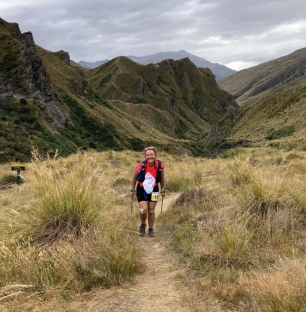
INSIDER KNOWLEDGE Samantha Turnbull has been a journalist/writer for 20+ years, but only started running (well, shuffling) in 2019. She’s a self-described slowpoke, but loves the camaraderie of trail events and the feeling of fierceness as she crosses the finish line after a very long race. Her fave trail is the Motatapu in NZ.

